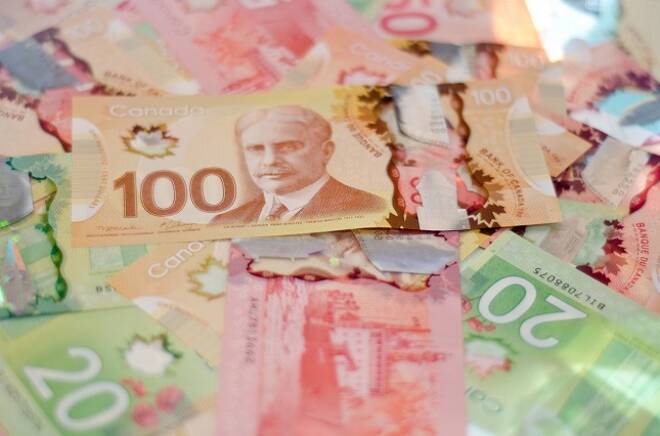Advertisement
Advertisement
USD/CAD Finishes Lower after US Imposes Tariffs on Canadian Steel, Aluminum
By:
Canadian Prime Minister Justin Trudeau called the tariffs “totally unacceptable” during an announcement on Thursday. He introduced dollar-for-dollar tariffs he said would remain until U.S. leadership came to its senses.
The U.S. Dollar continued to lose ground against a basket of major currencies on Thursday as investors assessed the potential impact of a euroskeptic government in Italy on the stability of the European Union and its use of the Euro as its currency.
June U.S. Dollar Index futures finished the session at 94.050, down 0.065 or -0.07%.
Thursday’s price action and continued recovery in the Euro after a steep sell-off earlier in the week indicates that investors have accepted that Italy has a problem, but that it may be a contained problem with less risk of contagion to the Euro Zone and almost no risk to the global economy.
The dollar rose against most major currencies except the Canadian Dollar. The USD/CAD closed at 1.2963, up 0.0089 or +0.69% after President Trump announced tariffs on Canadian steel and aluminum. Canadian Prime Minister Justin Trudeau called the tariffs “totally unacceptable” during an announcement on Thursday. He introduced dollar-for-dollar tariffs he said would remain until U.S. leadership came to its senses.
The dollar index was mostly impacted by the heavily weighted Euro. The EUR/USD settled at 1.1684, up 0.0020 or +0.17%. The Euro was largely influenced by the easing of fears over a snap election that some say would effectively be a referendum on Italy’s Euro membership.
Additionally, Euro Zone inflation jumped far more than expected in May on higher energy costs, data showed on Thursday, bringing some relief to the European Central Bank after market turbulence that has jeopardized its planned exit from its crisis-era stimulus program.
U.S. Economic Data
According to the Commerce Department, U.S. consumer spending increased more than anticipated in the month of April. Consumer spending jumped 0.6 percent last month. Economists were looking for a 0.4 percent increase.
Personal Income rose 0.3%, meeting expectations. The prior month was revised lower to 0.2%.
Personal consumption expenditures (PCE) price index excluding food and energy increased 0.2 percent for the third consecutive month. This moved the year-over-year increase to 1.8 percent.
Chicago PMI was an impressive 62.7, well above the 58.2 forecast. Pending Home Sales lost 1.3%, below the 0.4% estimate. The prior month was revised higher to 0.6%. Weekly Unemployment Claims fell to 221K, below the 228K forecast.
U.S. Treasury Markets
U.S. Treasury yields fell on Thursday after U.S. consumer spending data increased more than expected and personal income data matched expectations.
The yield on the benchmark 10-year Treasury note was lower at around 2.826 percent, while the yield on the 30-year Treasury bond ticked down to 2.991 percent.
About the Author
James Hyerczykauthor
James Hyerczyk is a U.S. based seasoned technical analyst and educator with over 40 years of experience in market analysis and trading, specializing in chart patterns and price movement. He is the author of two books on technical analysis and has a background in both futures and stock markets.
Advertisement
